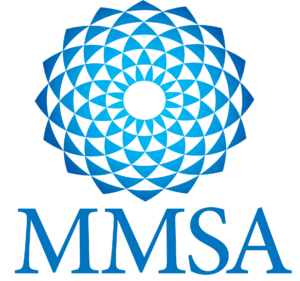The following is an interview between MMSA employees, senior research scientist Dr. Tom Keller and communications and digital media specialist Alex Theberge
Alex: Maine Mathematics and Science Alliance has been an organization committed to science, technology, engineering, and math (STEM) education in Maine since its inception. How did it all start?
Tom: In 1992, we started as a five-year, statewide systemic initiative from a National Science Foundation (NSF) grant to bring about change in how science and math are taught. MMSA set up seven beacon schools in our state. Each school was provided a math and science facilitator and there were facilitators at the MMSA headquarters at well. These educators were embedded at area schools to work with the region that they were assigned.
After those initial five years NSF did not continue funding the original initiative. Fortunately there was an angel investor from the Boston area to keep the work and organization going. In addition, Department of Education funding was generated from a different program distributing Eisenhower funds. This allowed us to focus on education standards; the implementation of those standards with professional development aligned to the standards. The National Council of Teachers of Mathematics was the first group in the country to come up with such standards. This was also the first time a group initiated standards instead of a textbook.
From that moment on MMSA has continued to uphold and lead the way in the rigorous, high-quality standards for science and math education for every kid in the state. Then the question became, “How do we help the teachers get there?”
Did MMSA help develop, initiate and implement these standards?
In the early 90’s there was a set of standards called the National Science Education Standards. What most every state did was rip off the cover and rename them, for example the ‘Oklahoma Science Education Standards’, or ‘Ohio State Standards’. Maine did essentially the same thing. Nobody wants national standards, and absolutely nobody wants Federal standards. But to discard these intelligent, thoughtful standards would have been malpractice. So, we used these science and math standards as a starting point then made them our own.
What are some of the obstacles that we are facing for these next 15 to 25 years?
One part of the problem is tradition.
Another part of the problem is focusing efforts on the wrong things. For example, we have to get away from the terrible system of testing schools once a year as a way to measure how they’re doing. But, our federal accountability is based on the yearly testing of grades 3-8, and high school in reading and math, and it’s what we use for each school’s report card. But this method barely scratches the surface of what happens at a school.
So, is a solution or part of the solution stronger, more accessible professional development?
And how do you motivate educators inundated with new standards and new ideas to find their way toward a common goal?
I think the sea of change we need is that teachers need to be listened to and be more valued. We need to increase teacher voice – we need to hear and listen to the teacher voice and respect teacher leadership. Teachers aren’t just sitting idly with a fourth-grade set of kids in some classroom. These teachers are thinking about what happened in third grade and how does what I’m teaching fit into fifth grade. What do I need to know?
The professional development that we offer needs to build that leadership piece as well as the content piece.
With all the teachers retiring after 25, 30 even 40 years, are we at risk of having a deficit of wisdom and experience? Or are the new teachers better equipped to manage all the new standards and methods? What part will we play in this transition?
We’ve done a lot of work around formative assessment. It’s getting to know what a kid knows and doesn’t know. Then you form lessons based upon what they already know. Rather than having every student do the same 50 problem worksheet today, 25 problem worksheet tomorrow, and then the next day read the textbook. It’s more individualized. Finding out what each student really knows and what is each student merely parroting back. It’s a more active, deeper way of understanding where each kid really is in their education.
So, you go through this formative assessment which helps create your educational plan for each student. Then at the end, you would do a summative assessment to ensure they’ve reached the plateau you were going for.
It’s a hard thing to do, but I think this whole process of formative assessment, utilizing the standards to understand where we want the students to be, is key. Using this combination to come up with a measure of how close each student is to the trajectory and further understanding what the educator needs to do to get them to the next step, and then knowing when they are there. This is already close to the way elementary and middle school teachers operate. But this may be more challenging for a high school teacher with this whole standards-based setup. But it’s worked so far, and it can only get better.


